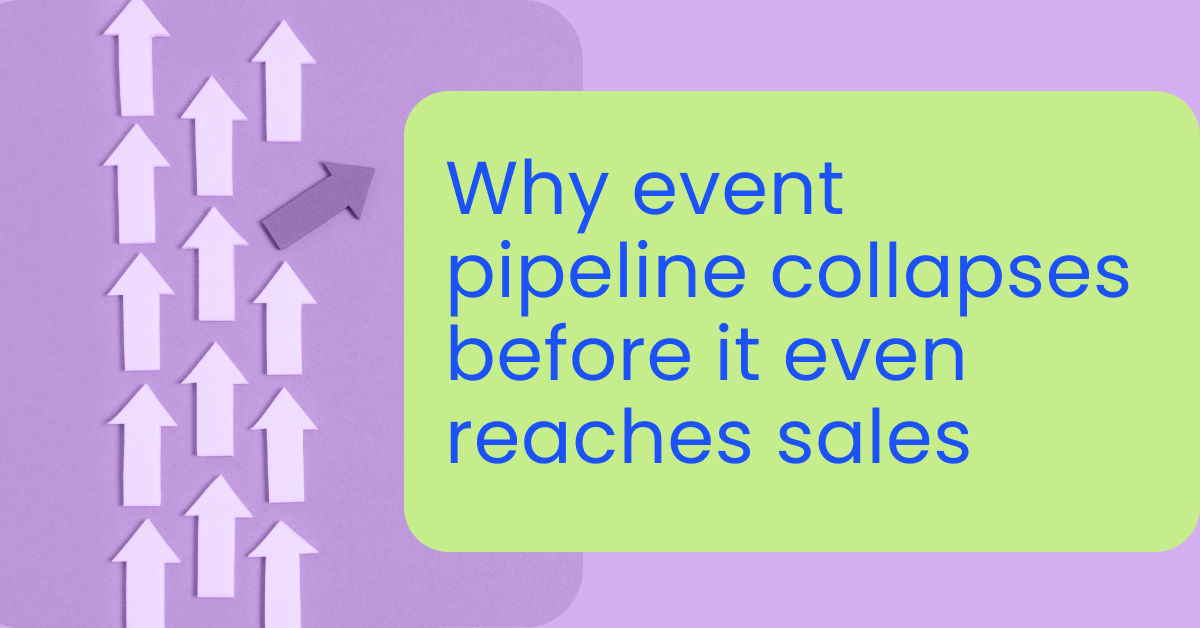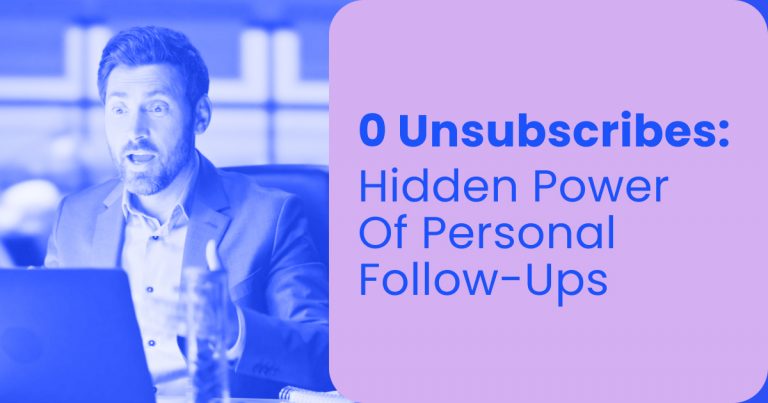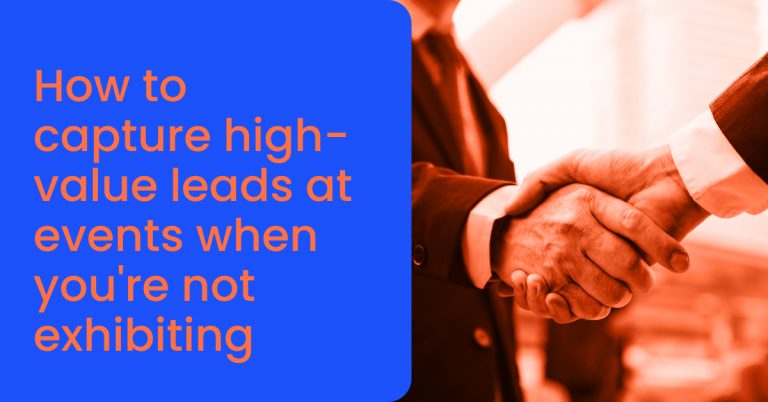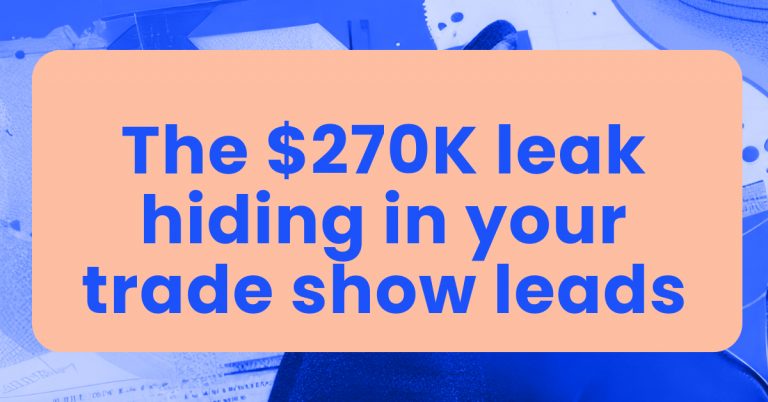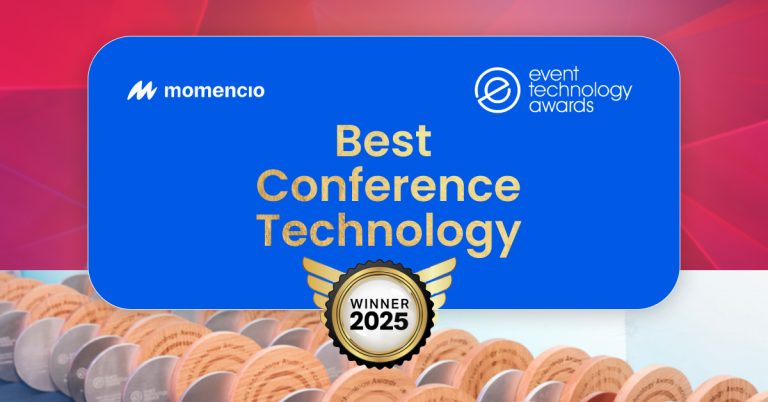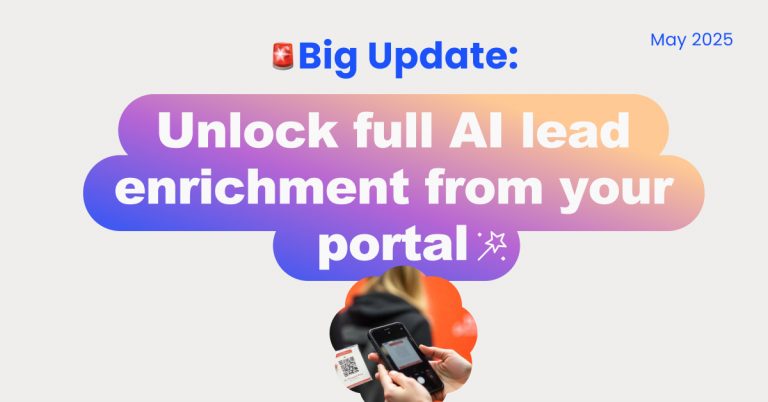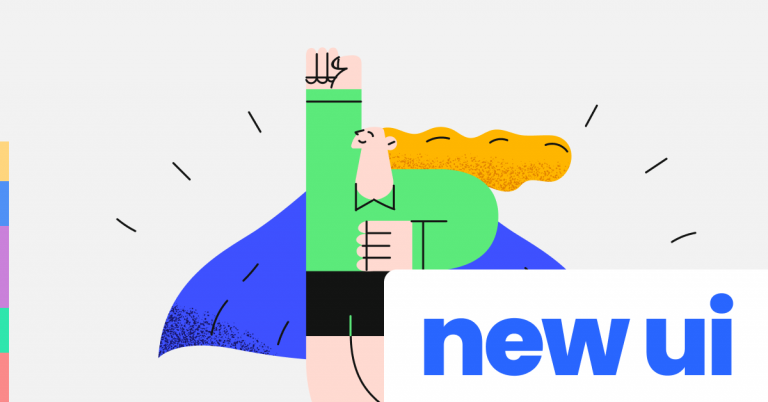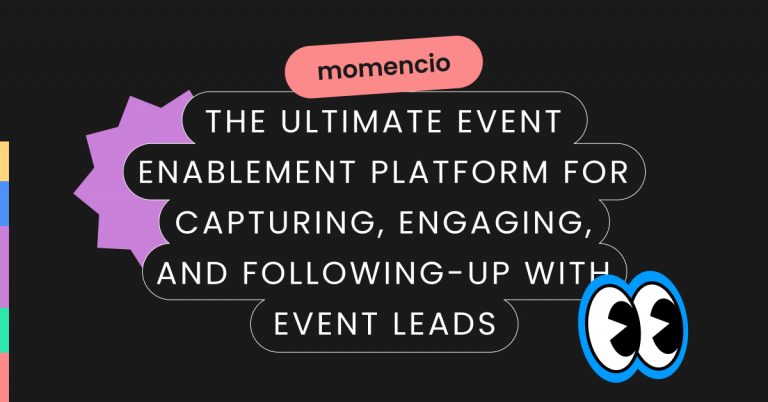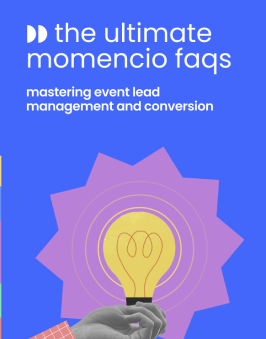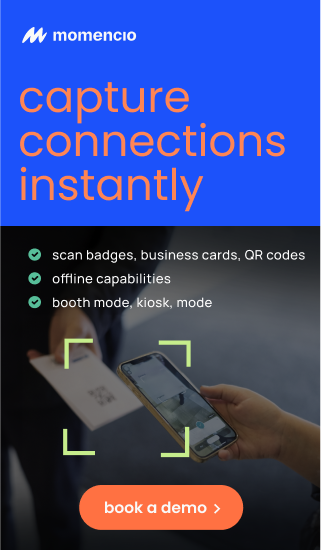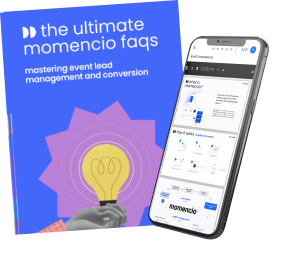The post-event leadership meeting always goes the same way.
Your VP reviews the event spend – $52,000 for the booth, travel, and three days of staff time. Then they ask the question every event marketer dreads: “What’s the pipeline impact?”
You mention the 200 badge scans. The busy booth. The positive conversations. The promising meetings.
Then sales chimes in with the line that ends the conversation: “These leads are garbage.”
But here’s what nobody in that room understands – The leads aren’t garbage. The capture method just made them look that way.
According to Salesloft’s 2025 State of Pipeline Generation Report, 86.1% of B2B sellers are facing higher pipeline quotas this year, while 39.6% report their current pipeline is actually weaker than last year. In this environment, events can’t afford to generate “mystery leads” that sales won’t touch.
The breakdown happens in the 60 seconds between a meaningful booth conversation and a generic badge scan. That gap is costing you qualified pipeline you don’t even know you lost.
The invisible 60 seconds that destroys event ROI
Picture your best rep at the booth. They’re three conversations deep when someone walks up and says: “We’re actually evaluating vendors right now. Our current platform isn’t cutting it.”
This is a buyer in-market. The exact person you spent $52K to reach.
But your rep is juggling two other conversations. The booth is packed. Someone needs swag. An executive just walked up. By the time they scan this person’s badge, the context is gone.
All that makes it to Salesforce: Name. Email. Company. Job title. Timestamp.
What doesn’t make it:
- “Evaluating vendors right now”
- “Current platform isn’t cutting it”
- The pain point they mentioned
- The specific product line they asked about
- The fact that they have budget approved
- Their implementation timeline
Sales receives this lead three days later. It looks identical to the 197 other names in the spreadsheet. No context. No urgency indicators. No conversation notes.
So, sales do what any rational person would do: they send a generic “great meeting you at the event” email, add the lead to a nurture sequence, and move on to leads that actually have context.
That buyer? They’re now talking to your competitor who captured the conversation, not just the contact.
What you’re actually losing (the math nobody wants to do)
Here’s the part that should terrify every event marketer. Research from Salesloft shows that only 3% of new B2B pipeline comes from events, despite events being one of the highest-investment channels. Meanwhile, 53.5% of new pipeline now comes from AE self-sourcing, where reps have complete conversation context because they did the research themselves.
The pipeline gap isn’t about effort. It’s about context.
Let’s run the numbers on your $52K event:
You captured 200 leads. Industry conversion rates suggest 8-12 of those people are actively in-market buyers (roughly 4-6% of event attendees are active evaluators). Let’s say 10 people.
If your average deal size is $75K, those 10 buyers represent $750K in potential pipeline.
But here’s the problem: Those 10 buyers look identical to the other 190 people in your spreadsheet. Sales has no idea who they are. So those buyers get the same generic follow-up as everyone else. They don’t respond. They go cold. They buy from someone else.
You didn’t lose those 10 buyers because your booth failed. You lost them because your capture method couldn’t tell sales who they were.
Why “just train reps to take better notes” doesn’t work
Every event marketer has heard this advice. The solution sounds simple: train booth staff to capture better information during conversations.
Here’s why that’s impossible:
- Cognitive load: Your reps are managing 30-50 conversations per day while running demos, answering technical questions, and keeping the booth flowing. Asking them to also document 11 intent signals per conversation is fantasy.
- The interruption problem: Stopping mid-conversation to type notes into an app breaks rapport with the buyer and kills booth momentum.
- Inconsistent data: Even trained reps capture different information in different formats, making it impossible for sales to prioritize effectively.
- The memory gap: By end of day two, your reps can’t remember which person said what. The details blur together.
According to Salesloft’s research, 46.5% of sellers say they’re held back by “too much manual work,” and 27.7% cite “not enough time to personalize outbound.” Your booth reps are experiencing both problems simultaneously.
The manual capture approach was never going to work. The environment is too chaotic, and the stakes are too high.
The real reason sales call your leads “garbage”
Put yourself in the sales rep’s position for a moment.
You receive a spreadsheet with 200 names. Every lead shows:
- Name
- Company
- Job title
- Timestamp
That’s it. No conversation summary. No pain points. No buying signals. No indication of fit or timing.
Now you’re expected to follow up with personalized, relevant outreach that continues the booth conversation. But you weren’t at the booth. You don’t know what was discussed. You don’t know who was genuinely interested versus who was just being polite.
So, what does sales do?
They send the same templated email to everyone: “It was great meeting you at [Event Name]. I’d love to continue our conversation about how [Company] can help with [Generic Value Prop]. When would be a good time to connect?”
This email fails because:
- It doesn’t reference the actual conversation
- It doesn’t address the specific pain point the buyer mentioned
- It doesn’t acknowledge the buyer’s timeline or urgency
- It treats a hot buyer the same as a tire-kicker
Salesloft’s data shows that 76.2% of sellers are now focused on improving personalization and relevance, because they know generic outreach doesn’t work anymore. But you can’t personalize follow-up when you don’t have the underlying conversation data.
When sales calls your event leads “garbage,” what they’re really saying is: “I don’t have enough information to do anything useful with these names.”
They’re not wrong.
How momencio captures what badge scanners miss
This is where the entire event capture paradigm needs to shift.
Recently awarded named the best conference technology by event tech live, momencio doesn’t operate like a lead retrieval app because scanning badges faster isn’t the problem. The problem is capturing the full conversation context while it’s happening, without disrupting booth flow.
Here’s how momencio’s platform solves the intent-capture gap:
1. AI-powered conversation capture during the interaction
Instead of frantically typing notes, booth reps use momencio to tag conversation signals as they happen:
- Pain points mentioned
- Products/solutions discussed
- Competitive mentions
- Timeline indicators
- Budget signals
- Technical requirements
- Decision-maker status
This takes seconds, not minutes, and happens naturally as part of the booth workflow.
2. AI EdgeCapture enriches every lead automatically
The moment a badge is scanned, momencio’s AI EdgeCapture enriches that lead with additional data points. This gives sales a complete picture before they ever reach out.
3. Real-time personalized microsites sent on the spot
Here’s where momencio fundamentally changes the game. Instead of waiting days to follow up, booth reps create and send a personalized microsite to each buyer while they’re still at the booth.
The personalized LiveMicrosite can be put together based on:
- The specific problems discussed
- The products they showed interest in
- Their role and industry
- Their stage in the buying journey
The buyer receives this custom resource hub instantly. They can explore deeper while the event is still fresh. And momencio tracks every interaction.
4. IntelliStream tracks real engagement after the event
This is the behavioral proof that separates real buyers from polite visitors.
momencio’s IntelliStream tracks:
- Who clicked on your emails
- What did they do on the microsite
- What content they viewed
- How long they engaged with each asset
- Whether they downloaded specific resources
- When they came back for second/third visits
Sales now has engagement signals, not just contact info.
5. AI IntelliSense surfaces behavioral insights
momencio’s AI Intellisense analyzes all this engagement data and tells sales:
- Which leads are hot (high engagement, multiple return visits, content downloads)
- Which leads need nurturing (opened once, light engagement)
- Which leads are cold (no engagement post-event)
- What messaging resonates (which content drove the most engagement)
Instead of treating 200 leads equally, sales can now focus on the 10-15 showing genuine buying behavior.
What changes when intent travels with the lead for your event pipeline
Let’s replay that post-event leadership meeting with momencio in the picture.
Your VP asks: “What’s the pipeline impact?”
This time, you show:
Instead of: “We got 200 scans”
You say: “We identified 47 high-intent leads based on conversation signals and post-event engagement”
Instead of: “Sales will follow up”
You say: “Sales is already working the 12 leads showing active evaluation behavior—three demos scheduled, two pricing calls this week”
Instead of: Defending lead quality
You say: “Here’s the engagement data: 68% of leads opened their personalized microsite, 34% returned for multiple visits, and we’ve identified the accounts with multiple stakeholders engaging”
The conversation shifts from “were these leads any good?” to “which of these hot accounts should we prioritize?”
Sellers identified three areas where AI agents would help most: researching accounts (69.3%), identifying the right buyers (59.4%), and writing personalized outbound (52.5%). momencio’s platform addresses all three at the point of capture.
The adoption objection (and why it’s actually easier than your current process)
The most common pushback we hear: “My team is already overwhelmed at events. They won’t adopt another tool.”
Fair concern. But consider what your team does today:
Current process:
- Scan badge with lead retrieval app
- Try to remember conversation details
- Manually type notes (if there’s time)
- Lose context by end of day
- Export raw spreadsheet post-event
- Spend hours cleaning data
- Hope sales follows up effectively
With momencio:
- Scan badge, momencio enriches the lead info
- Tag 2-3 conversation signals (10 seconds)
- Select relevant content from asset library & generate personalized microsite
- Send to lead on the spot
- momencio handles engagement tracking, and prioritization signals automatically
- Sales receives context-rich, engagement-scored leads
The booth experience actually gets simpler, not harder. Reps spend less time on post-event data cleanup and more time having conversations.
And because buyers receive immediate, relevant follow-up content, the leads stay warmer longer.
The pipeline you’re leaving on the table
Here’s the uncomfortable truth that nobody wants to say out loud:
You’re already generating high-quality event pipeline. You’re just not capturing the signals that prove it.
Those “garbage leads” sales complains about? Some of them are actually in-market buyers. But without conversation context and engagement data, sales can’t tell which ones.
So they get treated like cold outbound. They get generic emails. They don’t respond. They disappear.
And six months later, you see they closed with a competitor.
In an environment where 86.1% of sellers face higher quotas while 39.6% report weaker pipeline, events can’t afford to lose the buyers you’re already reaching.
The gap isn’t in your booth strategy. It’s in the 60 seconds between conversation and capture.
momencio closes that gap.
See how momencio turns event conversations into qualified pipeline →
